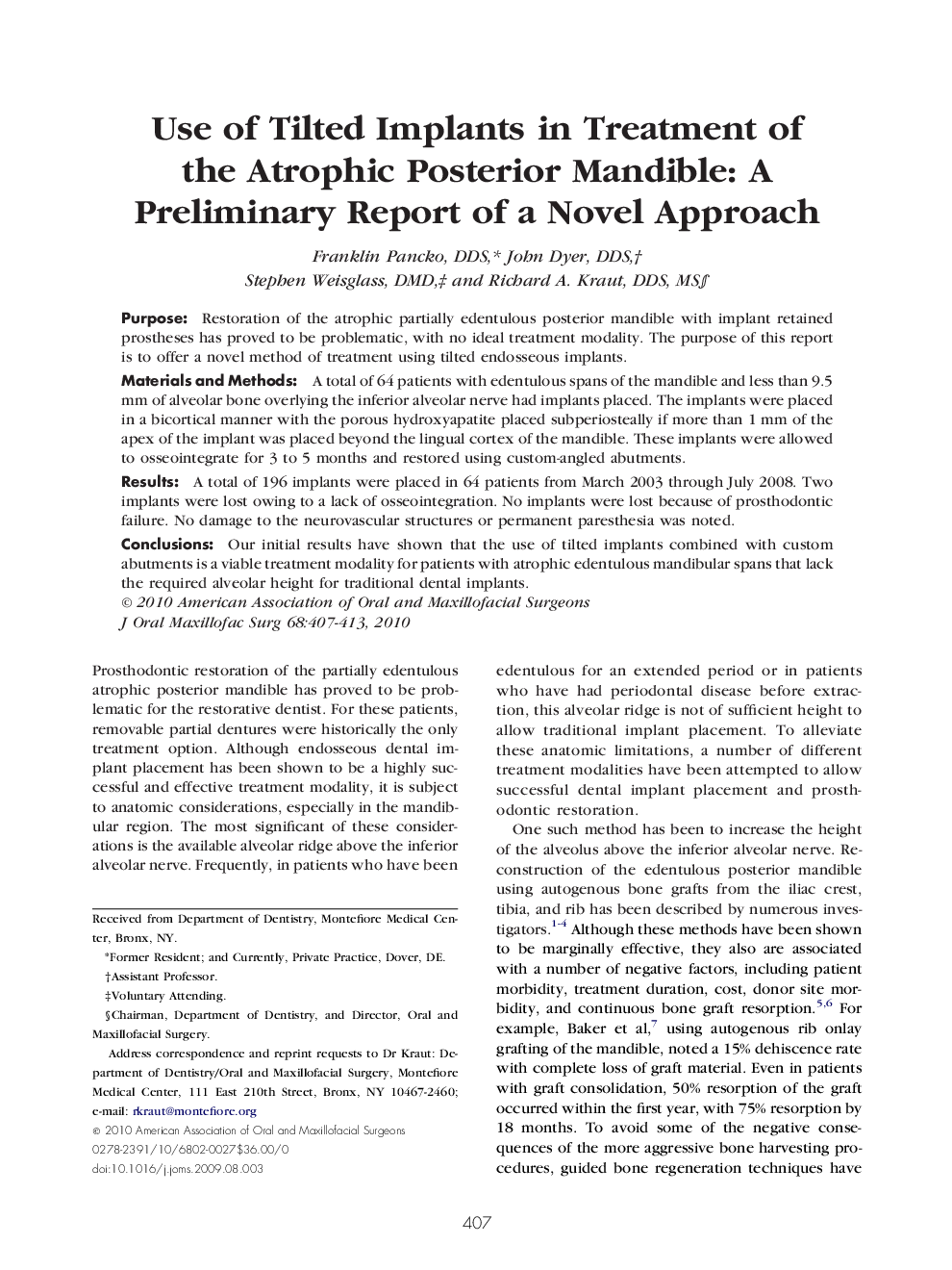| Article ID | Journal | Published Year | Pages | File Type |
|---|---|---|---|---|
| 3157196 | Journal of Oral and Maxillofacial Surgery | 2010 | 7 Pages |
PurposeRestoration of the atrophic partially edentulous posterior mandible with implant retained prostheses has proved to be problematic, with no ideal treatment modality. The purpose of this report is to offer a novel method of treatment using tilted endosseous implants.Materials and MethodsA total of 64 patients with edentulous spans of the mandible and less than 9.5 mm of alveolar bone overlying the inferior alveolar nerve had implants placed. The implants were placed in a bicortical manner with the porous hydroxyapatite placed subperiosteally if more than 1 mm of the apex of the implant was placed beyond the lingual cortex of the mandible. These implants were allowed to osseointegrate for 3 to 5 months and restored using custom-angled abutments.ResultsA total of 196 implants were placed in 64 patients from March 2003 through July 2008. Two implants were lost owing to a lack of osseointegration. No implants were lost because of prosthodontic failure. No damage to the neurovascular structures or permanent paresthesia was noted.ConclusionsOur initial results have shown that the use of tilted implants combined with custom abutments is a viable treatment modality for patients with atrophic edentulous mandibular spans that lack the required alveolar height for traditional dental implants.
